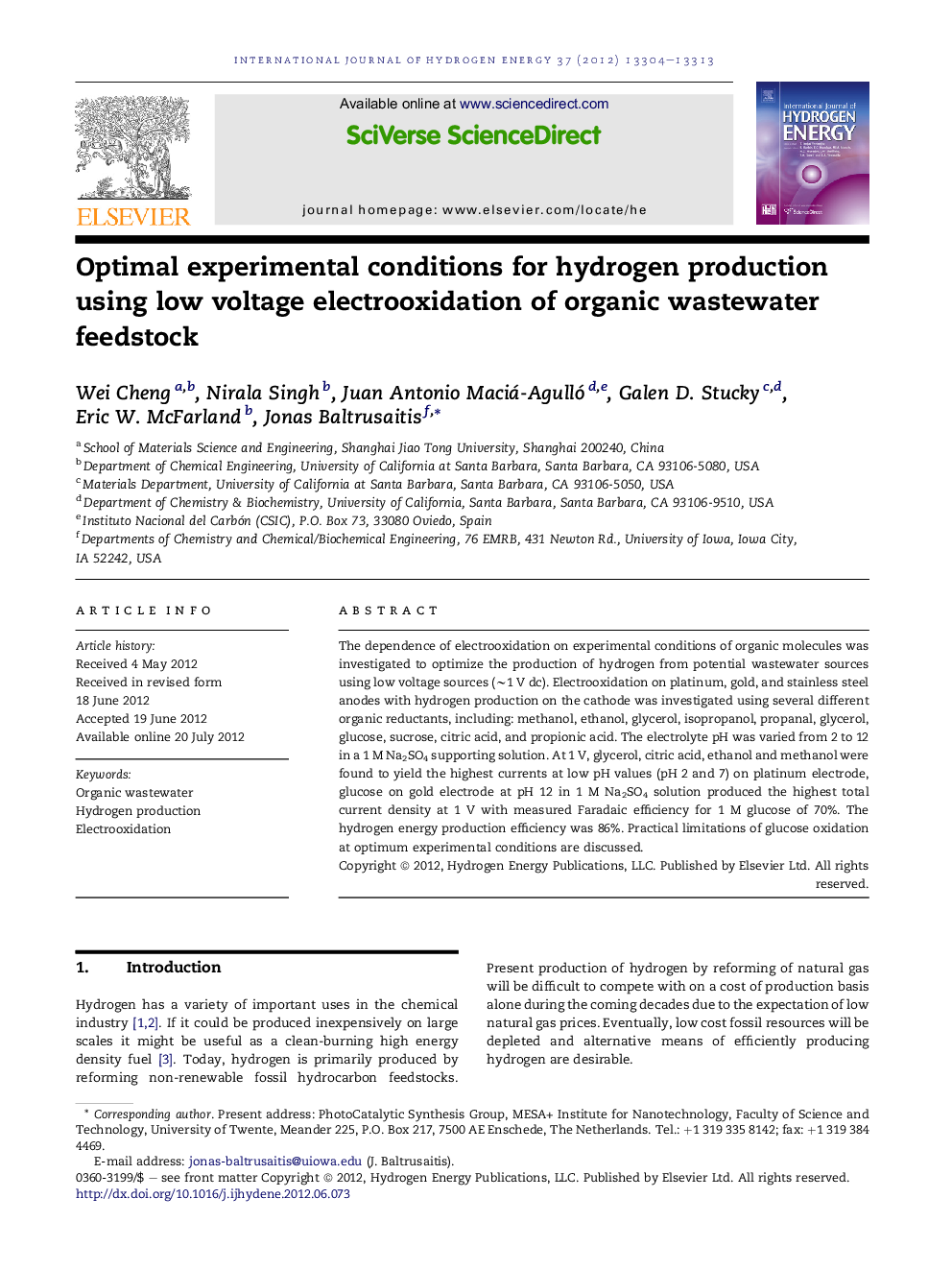| کد مقاله | کد نشریه | سال انتشار | مقاله انگلیسی | نسخه تمام متن |
|---|---|---|---|---|
| 1282224 | 1497551 | 2012 | 10 صفحه PDF | دانلود رایگان |

The dependence of electrooxidation on experimental conditions of organic molecules was investigated to optimize the production of hydrogen from potential wastewater sources using low voltage sources (∼1 V dc). Electrooxidation on platinum, gold, and stainless steel anodes with hydrogen production on the cathode was investigated using several different organic reductants, including: methanol, ethanol, glycerol, isopropanol, propanal, glycerol, glucose, sucrose, citric acid, and propionic acid. The electrolyte pH was varied from 2 to 12 in a 1 M Na2SO4 supporting solution. At 1 V, glycerol, citric acid, ethanol and methanol were found to yield the highest currents at low pH values (pH 2 and 7) on platinum electrode, glucose on gold electrode at pH 12 in 1 M Na2SO4 solution produced the highest total current density at 1 V with measured Faradaic efficiency for 1 M glucose of 70%. The hydrogen energy production efficiency was 86%. Practical limitations of glucose oxidation at optimum experimental conditions are discussed.
► We determined optimal conditions for organic wastewater electrooxidation at 1 V.
► 3 mA/cm2 current density for glucose on Au electrode at 0.5 M and pH 13 obtained.
► Faradaic efficiency of H2 production was ∼70% for glucose on the Au electrode.
► These experiments are an alternative to the conventional water photoelectrolysis.
Journal: International Journal of Hydrogen Energy - Volume 37, Issue 18, September 2012, Pages 13304–13313